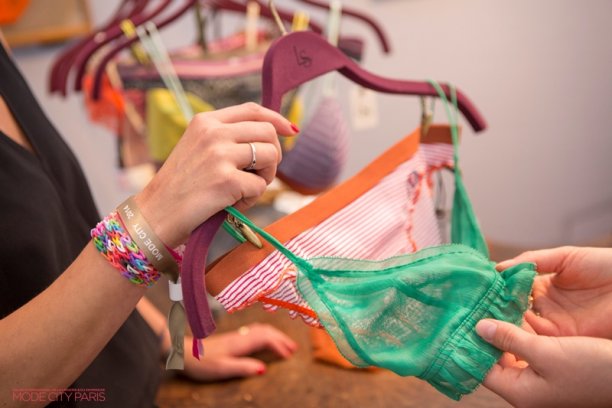
Salon International de la Lingerie and Interfiliere go digital
The issue of fabric safety is taking on an essential dimension for consumers in the fields of lingerie, swimwear, and activewear.

23rd May 2018
Knitting Industry
|
Paris
The issue of fabric safety is taking on an essential dimension for consumers in the fields of lingerie, swimwear, and activewear. They’re asking more questions about the origin of fabrics and the chemical substances used, as well as the entire manufacturing process. The topic will be explored at the upcoming Interfilière Paris, which will take place from 7-9 July.
“Fashion is the third most polluting industry in the world,” says Eurovet, the show organiser. “We purchase twice as many garments as we did 20 years ago – consuming more, producing more, throwing out more. The result of this: each year, 13.1 million tonnes of textile goods are disposed of throughout the world.”
According to the show organisers, many industrial stakeholders in the textiles sector have already experienced this awakening and are now placing all their ingenuity at the service of protecting the planet and mankind by creating raw materials that meet the needs of the environmental and social challenges faced by this industry.
In the same way, new lingerie and swimwear brands are cultivating an eco-friendly discourse: the choice of fabrics, the creative process, all the way down to the way of consuming, are all essential aspects of these new brand signatures.
Serpentina Bikini, founded in 2017, is committed to planting a tree in a deforested zone for each bikini purchased. Designer Ivana Vina Oro has created her Savia de Oro brand exclusively using the principles of eco-responsibility, with new types of sustainable manufacturing and high-quality work from local artisans.
On Baelle’s website, the message is clear: “Find your center, find your ethical self, find your authentic self”. This brand advocates ethical production and authenticity as central values, and uses natural, organic materials such as bamboo, silk, and cotton.
Interfilière Paris, in partnership with the Fédération de la Maille et de la Lingerie (Lingerie and Knitwear Federation), has chosen this year to highlight the latest eco-responsible innovations for the lingerie, swimwear, and activewear markets.
The Innovation forum will present an overview of the environmental and social impact of fabrics and textile processes in order to guide the visitor through the latest innovations, following the major guiding principles of eco-design: the 3 Rs: Reduce. Reuse. Recycle. The Innovation Forum will also host, in the shape of a public forum, a roster of talks.
A range of sustainable exhibits will include: Billon’s jersey fabrics in environmentally friendly botanical polyamide; Brugnoli’s collection of functional knits made from 100% bio-sourced polyamide; Aquafil’s Econyl, the polyamide made from fishing nets; Sofileta’s knits made using fibres recycled from postconsumer waste; Maglificio Ripa’s knits that include Evo bio-sourced nylon fibres, a polymer made from castor oil.
A collection of knits that include recycled 6.6 polyamide Q-Nova fibres by Fulgar will also be on display. Asahi Kasei recycles synthetic materials lost during the creation of fibres, with Roica EcoSmart, along with its artificial textiles produced using Cupro.
Hyosung Corporation’s creora eco-soft is a heat-dispersing elastane, which allows fabric makers to minimise heat consumption by reducing the temperature for heat bonding. Finally, Lenzing’s attempts to reduce our dependence on non-renewable resources will be demonstrated with the artificial cellulosic fibres, such as EcoVero, traceable, eco-friendly viscose.

Business intelligence for the fibre, textiles and apparel industries: technologies, innovations, markets, investments, trade policy, sourcing, strategy...
Find out more